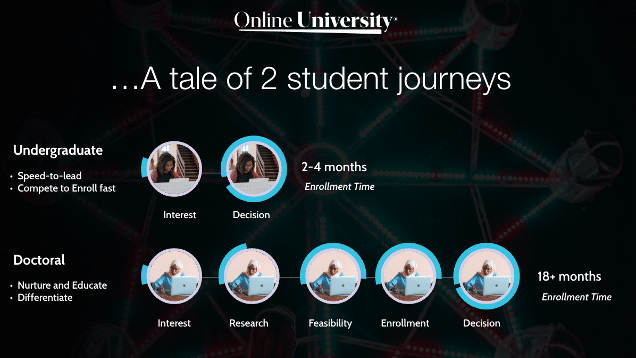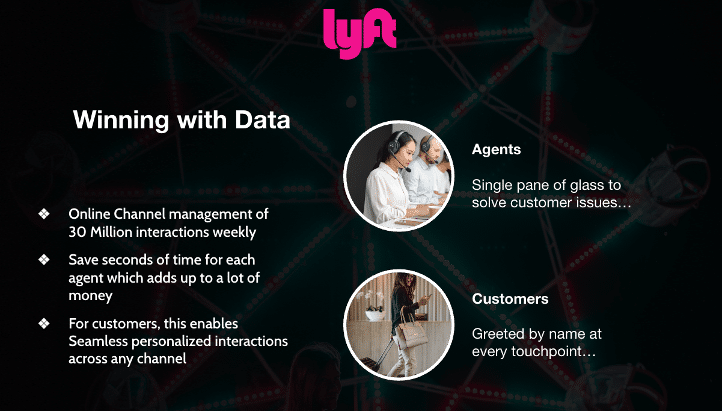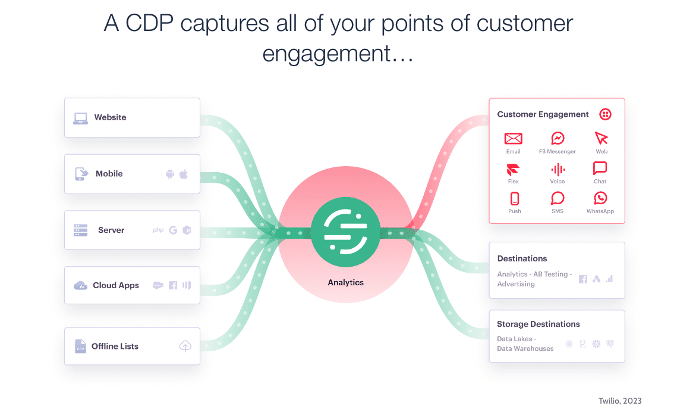The amount of digital data in the world is growing at an exponential rate. In 2021, the world broke 75 zettabytes of digital data for the first time. By 2025, that figure could more than double.
We generate a staggering 328.77 million terabytes of data each day — but we use a shockingly small percentage of that data after it’s created. For example, only 2% of the world’s data created in 2020 was used again in 2021.
Data usage — not data collection — is now the name of the game. And in an age where AI makes data more accessible than ever, companies need actionable strategies that help them gather data by joining customers on their journey.
What Role Should AI Play in Data Navigation?
Data and AI are intrinsically linked. Companies need data to learn more about their customers’ needs, challenges, and triumphs. They need AI to drastically shorten the distance between data collection and data analysis.
This doesn’t mean you need a fully-realized AI strategy in order to get started. All you need to do today is capture the data and have it ready for utilization later. If you capture data in the right ways, you’ll be positioned for success even if you don’t know the questions that you might ask of that data in the future. Top-performing companies don’t fear the integration of artificial intelligence alongside their own data practices. Instead, they look for ways to future-proof their data amid the AI revolution.
A Data Loss Case Study – 18 Months of Absent Information
A few years ago, Terazo Chief Strategy Officer Amee Mungo and Senior Director of Partner Strategy & Enablement Victoria Flood worked with a well-known online university that served undergraduate, graduate, and doctorate-level students via online curriculums.
The University engaged Flood and Mungo’s team to determine why more than 98% of their doctoral student prospects were “closed lost”. While their doctoral programs were well-respected and of great value, the University was underperforming on their enrollment metrics with this key group. The team began by asking a few simple questions about the doctoral student journey, to better understand the complicated set of decisions that each student faced in their enrollment journey:
- How many times are students engaging with the University before they decide to enroll?
- What does that enrollment timeline look like?
- Do they prefer to engage via phone or via email? What does that response time look like?
- What messages are being sent to students during their enrollment journey?
Here’s the issue: their data was completely undifferentiated.
The University’s data team had no answers to any of the above questions. They only tracked student prospect data for four months — the average timeline for an undergraduate buying decision. Any meaningful engagement after that period of time wasn’t tracked at all.

Here’s what the data finally showed:
The total enrollment timeline for a potential undergraduate student was only two to four months. This much was known. However, the online university had not realized that there was a vastly different enrollment timeline for a prospective doctoral student. Interested students spent, on average, more than 18 months deliberating before deciding to enroll in a doctoral program.
The University lost 18 months of insight into the enrollment journey and countless opportunities to influence a student’s decision to enroll.
They lacked data collection during the enrollment process — data that could have informed institutional outreach, follow-up questions, voluntary information about financial assistance and curriculums, and even periodic connections for student life milestones.
A Data Victory Case Study – Data Tracking at Every Step
Lyft wins because it tracks data at every turn. Lyft has a large number of stakeholders specifically responsible for their data strategy, to the point where they manage over 30 million transactions on a weekly basis.

The best customer service always takes place between one human and another. Lyft echoes that mindset in their core mission:
“Great customer service has a soul; it has a personality. And if [customer service teams] express empathy in a way that’s not forced, then they’ve expressed to you that you’re important — and that your business is important.
– Emmicia Bracey, Director of Support Operations at Lyft (2018-2020)
Great customer service has a soul, a personality, a drive to fulfill customer needs. It calls for empathy for a customer’s experience and a drive to address their concerns.
Lyft data isn’t simply front-facing or customer-facing. It’s also constantly available in the background, easily accessible by any customer service agent tasked with solving your problem. And more importantly, it’s also accessible by any business leader who needs critical insights to show them the best path to continue to meet customer expectations.
This is exactly what winning with data looks like.
Prepare Your Data to Leverage AI
AI is unparalleled in its capacity to help business leaders leverage data & insights. But in order to do this, the data must be captured and accessible! This is where the concept of future-proofing your data comes in. We don’t need to understand exactly how we will leverage AI models in the future if we take the one critical step to capture and organize our data today.
The simplest and most effective way to prepare for an AI future is to implement a good customer data platform (CDP). Twilio segment is a leading Customer Data Platform that captures all the data created by the actions of your customers. With the forced sunsetting of second- and third-party data use, first-party data generated by your customer’s interactions will be central to winning with data in the future.
What is a CDP?
Winning customer engagement drives revenue. 70% of customers are more likely to make repeat purchases from companies that offer personalization. 76% of consumers get frustrated if they don’t get the degree of personalization they expect.
A customer data platform positions all the information you collect between all different potential areas of engagement, unlocking personalization possibilities that drive customer satisfaction and retention over time.
Twilio Segment is the world’s leading Customer Data Platform (CDP). The platform provides 25K+ companies with the data foundation that they need to put their customers at the heart of every decision. Using Segment, companies can enable tailored, consistent, and real-time customer experiences by creating a single view of their customer that is enriched to understand each user’s real-time behavior at scale. All sources of data are tracked to measure every experience your customer has over the long-term.

A CDP, such as Twilio Segment, sits like a brain in the middle of all data interactions, including the customer engagement side, data storage, and segmentation for the Twilio product suite.
Preparing for CDP selection and implementation
Terazo’s data engineering practice can help prepare you for implementing any CDP. With data architecture analysis and design for hybrid and cloud-native architectures, and engineering for scale and flexibility, Terazo can ensure your organization is data-optimized and AI-ready. Rich bi-directional data and the right CDP will help you drive concierge-level customer engagement and revenue and growth that follows.






